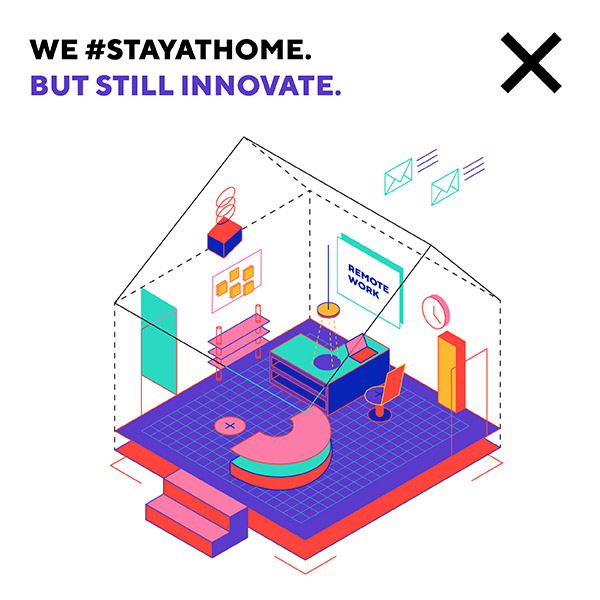What characterizes the high-class implementation of LEAN innovation and intrapreneurship programs in large corporations.
On the Polish and international markets there are many models of programs supporting Intrapreneurship in large companies. However, the more there are created, the more difficult it is for us to assess their value in isolation from the context of the entire organization.
Some programs are distinguished on the basis of their achievements, and among them we can include: General Electric, Adobe or Swisscom. In our case, the reference point is the “Kickbox” program presented by ADOBE. Following the global implementation of this methodology and adapting it to the Startbox program developed by Creative Labs, we would like to share a few thoughts on good (and bad) implementations.
1. The best employees do not have to be the best innovators.
The Intrapreneurship programme is not an award for the best employees. It is rather a way to utilize the energy of those employees whose expectations are not fully met in the current scope of duties and whose vision of the future is not always consistent with the fate of the company. The best employees identify themselves through a proactive attitude and a willingness to join in with innovative initiatives. They are the ones who bring their idea to the end by negotiating with their superiors, agreeing on the scope of responsibilities with HR departments or working on business models directly with the innovation department. Such employees manifest their motivation, proactivity and strength through participation in the program.
2. Each project should have its own budget.
The budget is one of the three key obstacles to the Intrapreneurship programme. An employee-innovator should have the resources necessary to test his/her project, because it is the budget that guarantees that this test will happen quickly.
3. Each project should have its own budget.
The second key obstacle to the implementation of the program is time. The innovator will certainly devote some of his free time to working weekends or evenings, but he/she will also have to devote standard working hours to complete the project.
4. An intrapreneur needs a guide.
The third key obstacle is knowledge about how to validate ideas. Unfortunately, guaranteeing entrepreneurship training for participants will not solve the problem, nor is it the most effective form of support. The program participant should be able to rely on clearly defined steps/phases for transition accompanied by concrete tools and concrete challenges to be overcome. The whole should be defined and easily verifiable by means of specific indicators. The employee should also be able to consult his or her vision with the mentor indicated.
5. An intrapreneur works alone.
When innovators work as part of a team, the number of ideas in subsequent editions of the program drastically decreases, the deadlines fall apart and the duties are blurred. It is very important that the author of the project has a holistic knowledge about the project, its sector, market and recipients at its initial stage, controlling all the tasks and conclusions drawn during the market validation of the idea. The author of the idea will manage to bring it to the end of the first validation only on his/her own. At a later stage, when we work on a mature idea and validate a series of other risk factors (technological, legal, financial, regulatory, etc.), a team of experts will be absolutely necessary here.
6. Motivation of the program participants.
Financial motivation is not always the most important thing. Innovators want to be noticed and appreciated for their work. This and the “fame” in the company or the image as an innovator-expert are sometimes stronger motivators than a cash reward.
7. Full involvement of the organization.
The whole company should be aware of the program and adjusted to its activities – so that the participants do not come across potential bottlenecks. Intrapreneur runs his/her project, but each employee can be a co-author of its success: e.g. a director who sponsored a prototype, a manager who serves as a mentor’s advice, a colleague who evaluates ideas or mobilizes necessary resources (e.g. databases of potential clients or Internet marketing tools, etc.).
8. Quick feedback from the organization.
Innovative activities are very demanding for program participants, especially when they have to reconcile their daily routines with unusual efforts and learning. Under such conditions, the company should not keep them in uncertainty, it is the employer’s responsibility to quickly feedback and respond to the results presented by the employees. All the more important in this case is the timeliness and predictability of the process. Once projects have passed through the phase of presentation of the results, decisions at Director level should be taken as soon as possible so that programme participants do not lose motivation.
9. Quick feedback from the organization.
It is not the task of the evaluation committee to decide whether an idea is a good idea or a bad one because it may not have enough knowledge to prove it. The real function of the committee is to challenge the project and set priorities (e.g. to give higher priority to variants in the company’s brand transformation strategy) and to secure the necessary funds according to the potential return on investment.
10. An intrapreneur needs space to act.
Real entrepreneurs are people of action. Classical training is only an obstacle for them, so they work best with a trainer or a guide who helps them to implement the project, transfers the necessary know-how and who is fully available when a consultation is needed. In addition, they will expect that the company will involve them in the implementation of their idea after the successful completion of the program.

